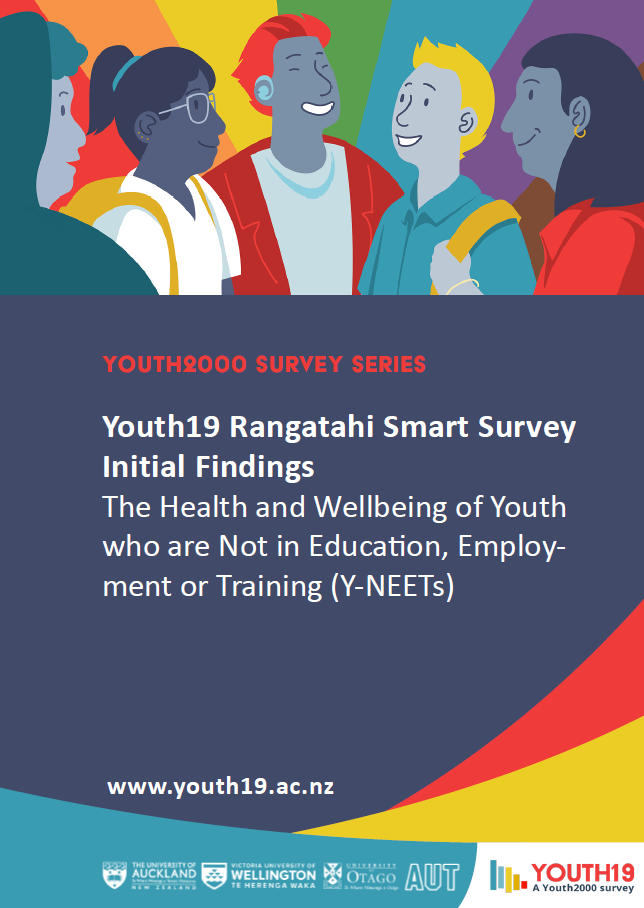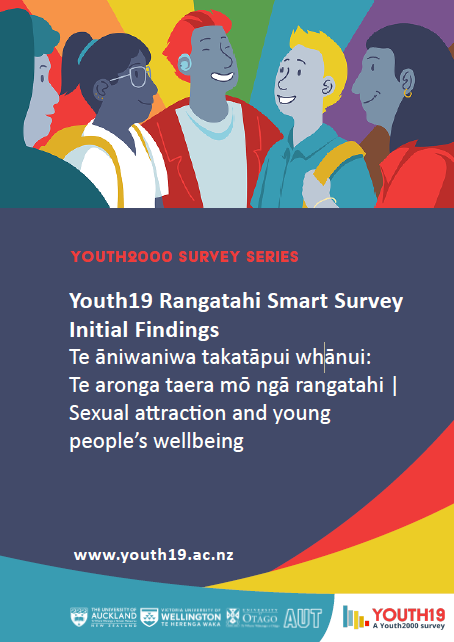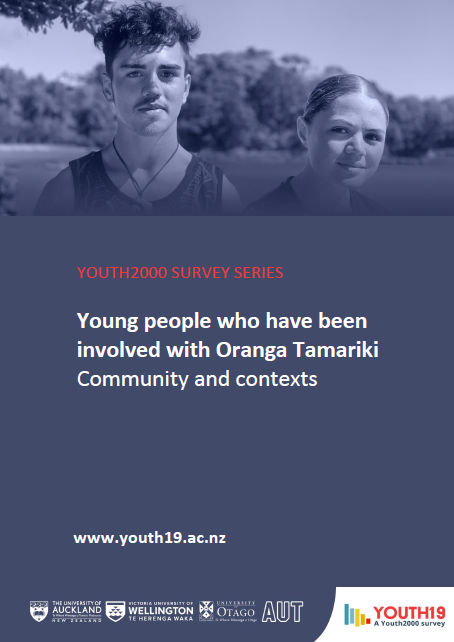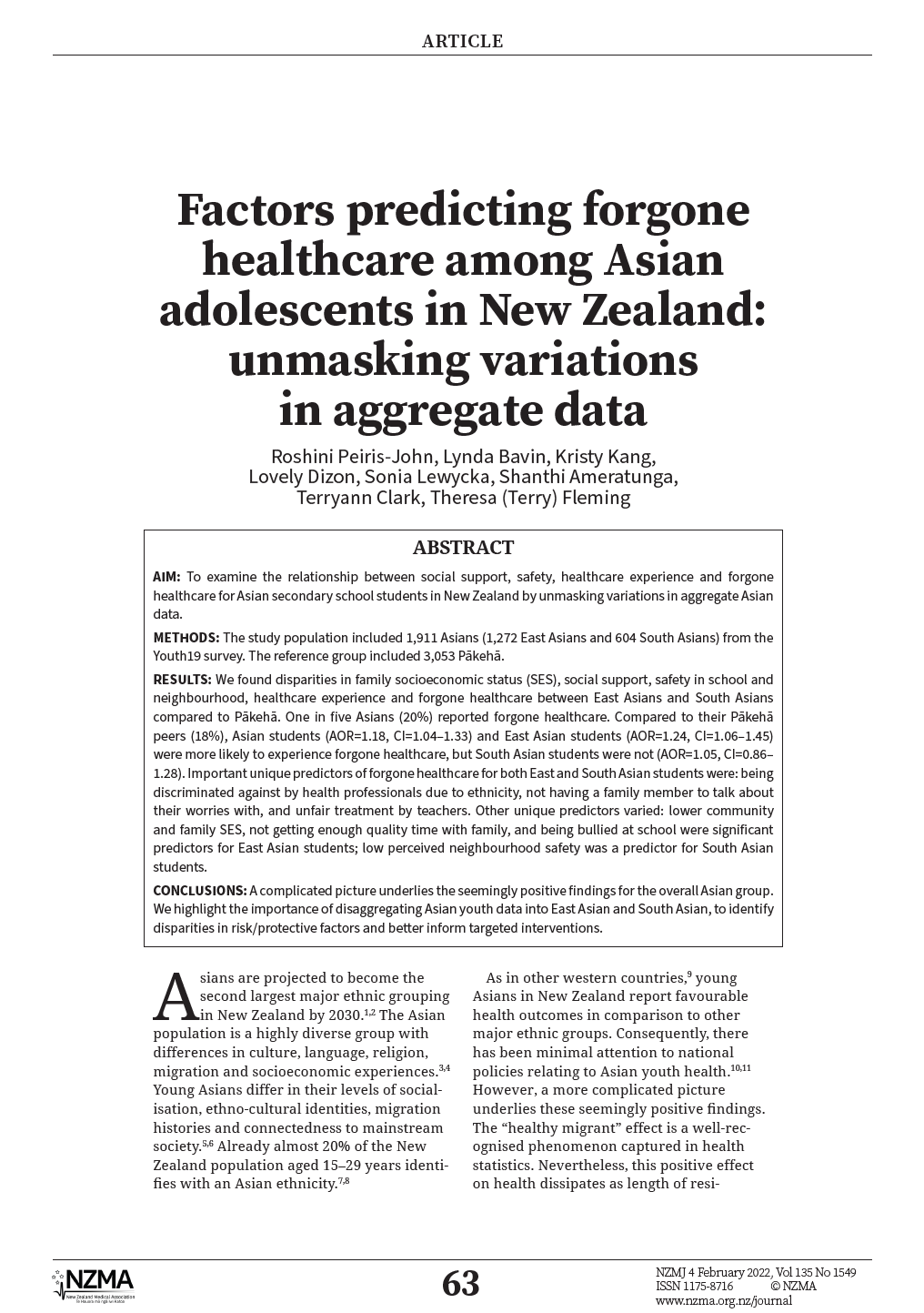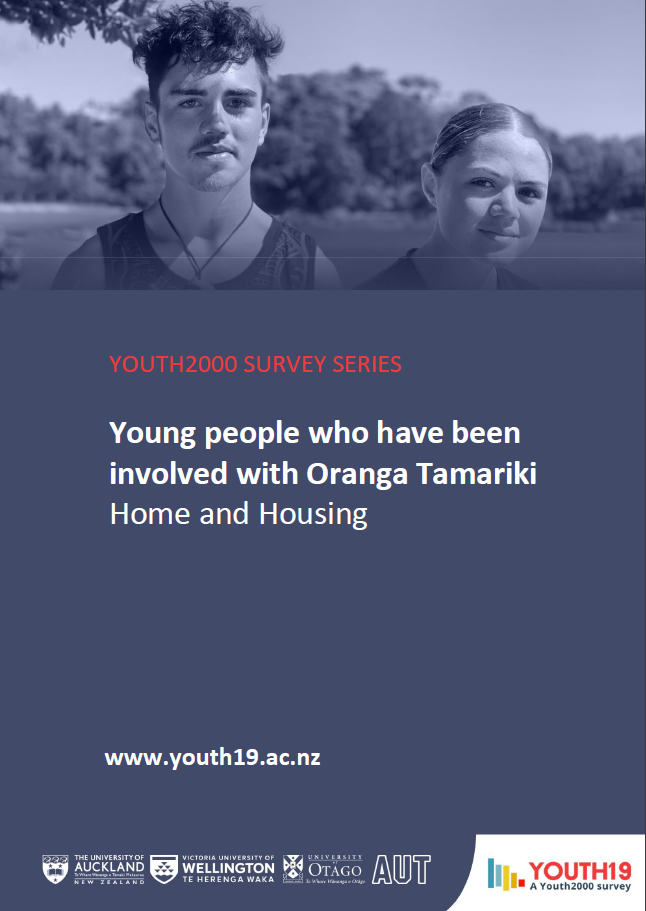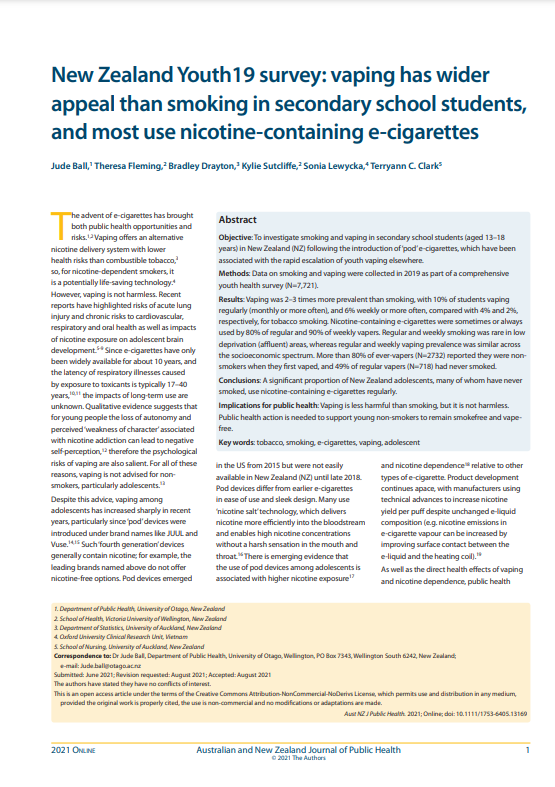In this series of reports to be published in 2022 we use survey data from Youth19 to explore life for young people who report being involved with Oranga Tamariki or Child Youth and Family Services.
This report focuses on the lives of takatāpui and rainbow young people from mainstream schools, alternative education, and those not in education, employment or training. The report explores topics for trans-gender and same-sex or multiple-sex attracted young people, including their cultural identity, home and housing, health and wellbeing, and community involvement for takatāpui and rainbow young people who have never been involved with Oranga Tamariki, and who have ever been involved.
In this series of reports to be published in 2022 we use survey data from Youth19 to explore life for young people who report being involved with Oranga Tamariki or Child Youth and Family Services.
This report explores the themes of the Youth19 open-text survey responses for young people who have ever been involved with Oranga Tamariki.
In this series of reports to be published in 2022 we use survey data from Youth19 to explore life for young people who report being involved with Oranga Tamariki or Child Youth and Family Services.
This report focuses on the community involvement, substance use, school life, and violence for young people who have never been involved with Oranga Tamariki, ever been involved, and are currently involved.
In this series of reports to be published in 2022 we use survey data from Youth19 to explore life for young people who report being involved with Oranga Tamariki or Child Youth and Family Services.
This report focuses on the mental health, physical health, and access to healthcare for young people who have never been involved with Oranga Tamariki, ever been involved, and are currently involved.
This paper uses Youth19 data to explore factors predicting forgone healthcare among Asian adolescents
The study found that some factors impacting students’ access to health services, such as discrimination by healthcare professionals, were consistent across Asian groups. Other factors varied between South and East Asian students, highlighting the importance of disaggregating Asian youth data.
More info including media releases can be found here.
There have been many attempts at measuring Māori identity and cultural engagement, yet there have been no scales created to specifically explore whanaungatanga.
Whanaungatanga can be operationalised as active participation in and a sense of belonging to social groups and collective, reciprocal caring relationships.
In this article, we document the development of a whanaungatanga scale alongside a measure of Māori identity.
In this series of reports to be published in 2022 we use survey data from Youth19 to explore life for young people who report being involved with Oranga Tamariki or Child Youth and Family Services.
This report focuses on life at home and the security of housing for young people who have never been involved with Oranga Tamariki, ever been involved, and are currently involved.
In this series of reports to be published in 2022 we use survey data from Youth19 to explore life for young people who report being involved with Oranga Tamariki or Child Youth and Family Services.
This report focuses on the cultural connectedness of young people who have never been involved with Oranga Tamariki, ever been involved, and are currently involved.

